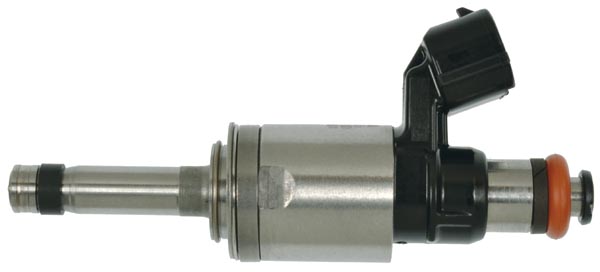Understanding new technologies can help service professionals, distributors, and suppliers increase sales opportunities while mitigating engine performance issues
It’s no secret that the global automotive industry, as well as the overall transportation industry, continues to evolve as emissions regulations, fuel economy requirements, and new technologies take precedence.
A number of markets have banned the sale of internal combustion engine (ICE) vehicles to meet these strict emission regulations, and the growth of electric vehicles (EV) globally is on the cusp of reaching 1 percent of all vehicles on the road.

While manufacturers are focused on building out new EV programs, the use and sale of ICE vehicles isn’t going away quickly. In the U.S., for example, there are close to 300 million vehicles-in-operation (VIO) and about one-half of 1 percent are battery electric. And since the Environmental Protection Agency (EPA) began tracking vehicle data in 1975, 650 million vehicles have been manufactured for use in the U.S., with gasoline being the source of power capturing ~99 percent of production.
New technologies for ICE vehicles
Vehicles manufactured and sold today feature a wide range of technological advancements that address emissions, fuel economy, vehicle power and engine packaging, and more. These technologies include, but are not limited to, turbocharging, gasoline direct injection (GDI), start-stop systems, and continuously variable transmissions (CVT).
Focusing specifically on turbocharging and GDI, these vehicle engine technologies provide more efficient engine designs and overall operation. And GDI is the fastest growing fuel segment in the automotive industry.
GDI gains widespread use
GDI was used in less than 3 percent of vehicles as recently as model year 2008, and was projected to be in 55 percent of vehicles in model year 2020. In fact, six of the leading vehicle manufacturers have GDI fuel systems in more than 80 percent of their vehicles, with Mercedes (100 percent), Mazda (100 percent), BMW (99 percent), Subaru (98 percent), and VW (97 percent) leading the way.

While this technology provides multiple benefits, such as increased efficiency and reduced emissions, unfortunately (or fortunately for automotive service professionals), GDI has a number of issues. These systems tend to be noisy, require special tools for service, include a number of components that are “one-time use” items, and are well-known for production of carbon deposits on the backside of the intake valves.
Due to these reasons, a number of components should be replaced concurrently to ensure smooth operation:
- Fuel Injectors: The most cost-effective repair is to replace the full set of fuel injectors. If one injector is failing, the others are probably not far behind. In addition, there may be substantial future labor cost savings for the customer when the full set is replaced.
- High-Pressure Fuel Pumps: These fuel pumps are high-failure components. A damaged or malfunctioning high-pressure fuel pump may shorten the overall lifespan of the engine while reducing fuel economy. Additionally, since the injection timing may also be affected, a rise in harmful emissions could lead to catalytic converter failure.
- Injector Service Kits: Whether replacing the injectors with new injectors or servicing the system, new injector service kits are always required.
- Additional System Components: Due to the extremely high PSI that GDI systems produce, most components are considered one-time use only when servicing. This includes fuel pump o-rings, mounting gaskets, mounting plates, fuel feed lines, and cam followers.
Turbo chargers on the rise
While not as new as GDI, the use of turbochargers in automotive applications is also on the rise. Turbocharged engines accounted for 30 percent of all production in model year 2019, and was projected to reach 35 percent in model year 2020.

Reducing the overall vehicle weight to comply with emission regulations to provide cleaner transportation resulted in the prominence of turbocharger usage. Automakers are able to meet the standards without compromising on vehicle performance.
For example, the Ford 3.5-liter V6 EcoBoost engine produces equitable same power as the naturally aspirated Ford 5.0-liter V8 engine. And gas-powered engines equipped with turbochargers can improve fuel economy by as much as 20 percent, indirectly.
Even as these benefits are plentiful, turbochargers can fail. Loss of power, excess smoke, high fuel consumption, overheating, high exhaust temperatures, and oil leakages from the turbocharger itself are all symptoms that could indicate turbocharger malfunction.
However, these faults are often wrongly attributed to the turbocharger because defects in other components can produce the same symptoms. The turbocharger performance can only be impaired by mechanical damage or blockage caused by dirt.
System sales and replacement opportunities
Of the 14 vehicle manufacturers analyzed in the EPA’s 2020 Automotive Trends Report, only one does not utilize GDI or turbocharging technologies. And that is Tesla. The remaining 13 (BMW, Ford, FCA/Stellantis, GM, Honda, Hyundai, Kia, Mazda, Mercedes, Nissan, Subaru, Toyota, and VW), all utilize GDI and turbocharging technologies.
In model year 2019, nearly 90 percent of new vehicles with gasoline turbocharged engines also used GDI as these technologies are often paired to further increase engine power.
Another sales and service opportunity in the aftermarket is related to variable valve timing. Engines with GDI are almost exclusively using multi-valve and VVT technology. Similar to turbocharging and GDI, VVT advancements offer better fuel economy, lower emissions, and increased engine life.
Understanding the function of these technologies, and their continued use, can help automotive service professionals, distributors, and suppliers increase sales opportunities while mitigating engine performance issues.
Recognized as a thought-leader and well-versed professional in the global automotive industry, Brian Wheeler is a business development, marketing, communications, and sales executive with more than 15 years of experience, specializing in the global automotive OE and automotive aftermarket industries. He joined Standard Motor Products in 2021 after spending most of his career on the supplier and agency side, having managed global OE and aftermarket marketing for a Michigan-based Tier 1 supplier; built a Detroit-based marketing agency’s auto business; led all marketing, product management, and EMEA sales for an engine components supplier; and most recently directed automotive marketing initiatives for global professional services firm Deloitte.
Sources:







Comments are closed.